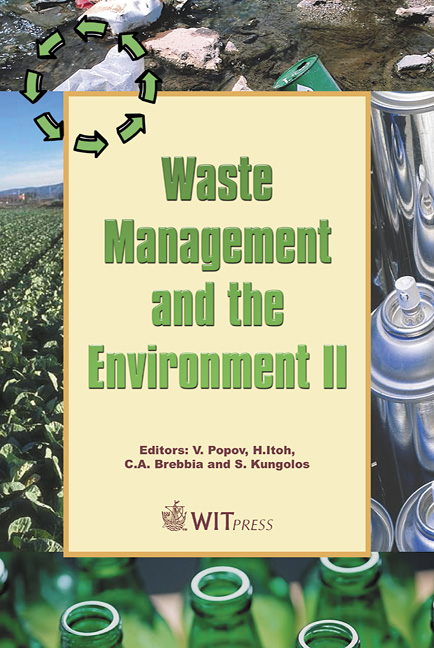Bioremediation Of The Contaminated Groundwater Based On The Biofilm Of The Autochthonous Microflora
Price
Free (open access)
Transaction
Volume
78
Pages
9
Published
2004
Size
649 kb
Paper DOI
10.2495/WM040561
Copyright
WIT Press
Author(s)
M. Siglova, L. Vesela, J. Masak, P. Zachar, A. Cejkova, J. Mikes & V. Jirku
Abstract
Continual biofilm reactors can provide cost-effective and long term solutions for many groundwater contamination problems. As groundwater moves through bioreactive filling in the reactor, contaminants are treated and transformed into harmless by-products. The aim of our work was carrying-out of laboratory studies for the first biologically active Permeable Reactive Barriers (PRB) constructed in the area of the Czech Republic. The industrial area of the chemical plant Synthesia a.s. in Pardubice (Eastern Bohemia) was chosen as the suitable site. The local groundwater is contaminated by many chemical compounds, especially aromatics compounds (benzene, toluene etc.), chlorinated aromatics compounds (chlorbenzenes, chlorotoluens etc.), nitrobenzene and NES (nonpolar extractable substances) the amounts from hundreds to thousands micrograms each. In our case the PRB is considered as the combination of the reactive materials (solid humic substances – oxyhumolite) and the microflora with degradation abilities, which was attached on the surface of the oxyhumolite. The choice of the suitable carriers, the finding of appropriate physical-chemical conditions (amount of nutrients, needful concentration of oxygen etc.) and characterization of the microflora was carried out in the laboratory. Laboratory batch and column tests were used to study the decomposition rates and mechanisms, to estimate remedial effectiveness, and to develop design parameters of a suggested barrier. Keywords: biofilm, permeable reactive barrier, biodegradation, aromatics compounds, laboratory simulation.
Keywords
biofilm, permeable reactive barrier, biodegradation, aromatics compounds, laboratory simulation.





